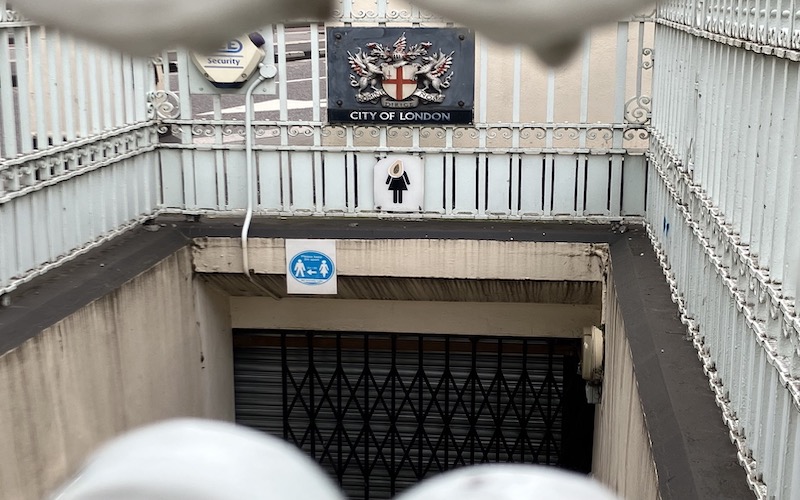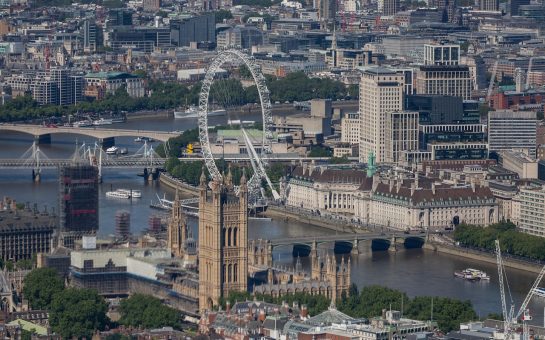More than four in five Londoners are not happy with the number of public toilets in their borough according to new research by Age UK London.
Approximately 81% of Londoners think there are not enough public toilets in their borough and only 3% of the 637 people surveyed have reported that public toilet provision is considered good.
Age UK London carried out their London Loos survey as part of their Out and About campaign seeking to tackle the root causes of social isolation and loneliness amongst older people.
CEO of Age UK London Abigail Wood said: “Good public toilet provision is a hallmark of a civilised society and the fact that 81% of people think that the availability of toilets in their borough is bad is a scandal.
“The ‘loo leash’, where people don’t leave their homes as much as they might like because of worries that they will not be able to find a public toilet, is a significant cause of social isolation.”
According to data from the Greater London Authority from 2011, the London boroughs with the least number of public toilets were Merton, Havering, and Barking and Dagenham, whereas the boroughs that scored the highest in terms of public toilet provision were Richmond, Wandsworth and Enfield.
Head of Age UK’s London Loos campaign, John McGeachy, said: “It just wasn’t possible to repeat that research in 2021.
“Something with public toilets broadly is that it’s really hard to find data, and there’s different ways to go about finding data, but it’s complicated.
“Sometimes it’s dependent on how good the information the local authority has, and it’s partly sort of dependent on definitions of what a public toilet is and isn’t.
“I would say, in every borough of all the kind of overall public toilet provision, I’d say the council-managed proportion of that is sort of 10-20%, so this is quite a small proportion.”
A Havering Council spokesperson said: “The information in this survey dates back to 2011 – and therefore is out of date and does not present an accurate picture of public toilet provision in Havering.
“There are currently seven different locations where public toilets are provided by the council across the borough.
“This is in addition to a number of other public toilets run by privately-owned shopping centres and individual businesses.
“This is not a statutory service the council has to provide within its budget. The public toilets that have been closed were either under-used or vandalised, therefore, it was not economically viable to keep maintaining them.”
A Richmond Council spokesperson said: “We’re pleased to hear residents are happy with the provision of public toilets in the borough.
“Since 2008, we have partnered with local businesses via our Community Toilet Scheme (CTS) by providing financial compensation that allows non-paying customers to use their facilities.
“The widespread promotion of the scheme and interactive map enables residents to easily find clean, safe and accessible toilets when they are out and about, ensuring everyone can explore the borough whilst having their needs met.”
Age UK’s survey also revealed that 90% consider whether there is a public toilet available before leaving their home, and more than half of those surveyed said they sometimes reduce the amount they drink before going out over concern about the lack of public toilet provision at a particular location.
Wood said “This finding is shocking as dehydration is associated with ill health among people of all ages but especially older people, from infections to dizziness that can cause falls.”
Respondents said places where provision of toilets were not good enough included high streets (70%) and parks (47%).
In terms of what was regarded as most important when it came to public toilets, 48% said cleanliness, followed by opening times (25%) and accessibility (13%).
Age UK London called for councils to adopt local toilet strategies to monitor and improve local provision and are also calling for more Community Toilet Schemes where the local council supports businesses in their borough who allow non-paying customers to use their facilities.
In the survey, 75% of people said they did not feel confident asking to use the toilets in a café or shop where they had not spent money, but 80% said they would feel confident asking if the business was part of a Community Toilet Scheme (CTS)
According to research carried out by Margit Physant MSc for Age UK on CTSs last year, a CTS refers to the arrangement in which private businesses allow their toilet facilities to be used by non-customers usually in exchange for a fee paid by the local authority.
Participating shops, restaurants and bars in the City of London’s Community Toilet Scheme (CTS) can be found on the City’s Toilet Map.
The ways in which councils could improve public toilet provision in their borough is not a one-size fits all approach, according to McGeachy.
He said: “One borough might choose to improve provision by concentrating on a community toilet scheme, for example.
“Whereas another borough might go about improving public toilet provision by focusing on having a strategy and sort of auditing provision and monitoring the availability.
“Then another council might focus on improving the communication available to residents about where toilets are so improving things like having maps, or putting their data on to different apps available, or improving signage.
“Our campaign definitely hasn’t been about saying to councils: ‘You must build shiny new public toilets.’ That’s not really what we’ve been about. I mean, we would love to see that of course, in an ideal world that’s what would happen.
“But, we know that, because there is no funding available from central government, specifically for public toilets, borrowers have to find their own solutions and there are ways that they can be innovative and resourceful and come up with things that will improve the situation.”





Join the discussion